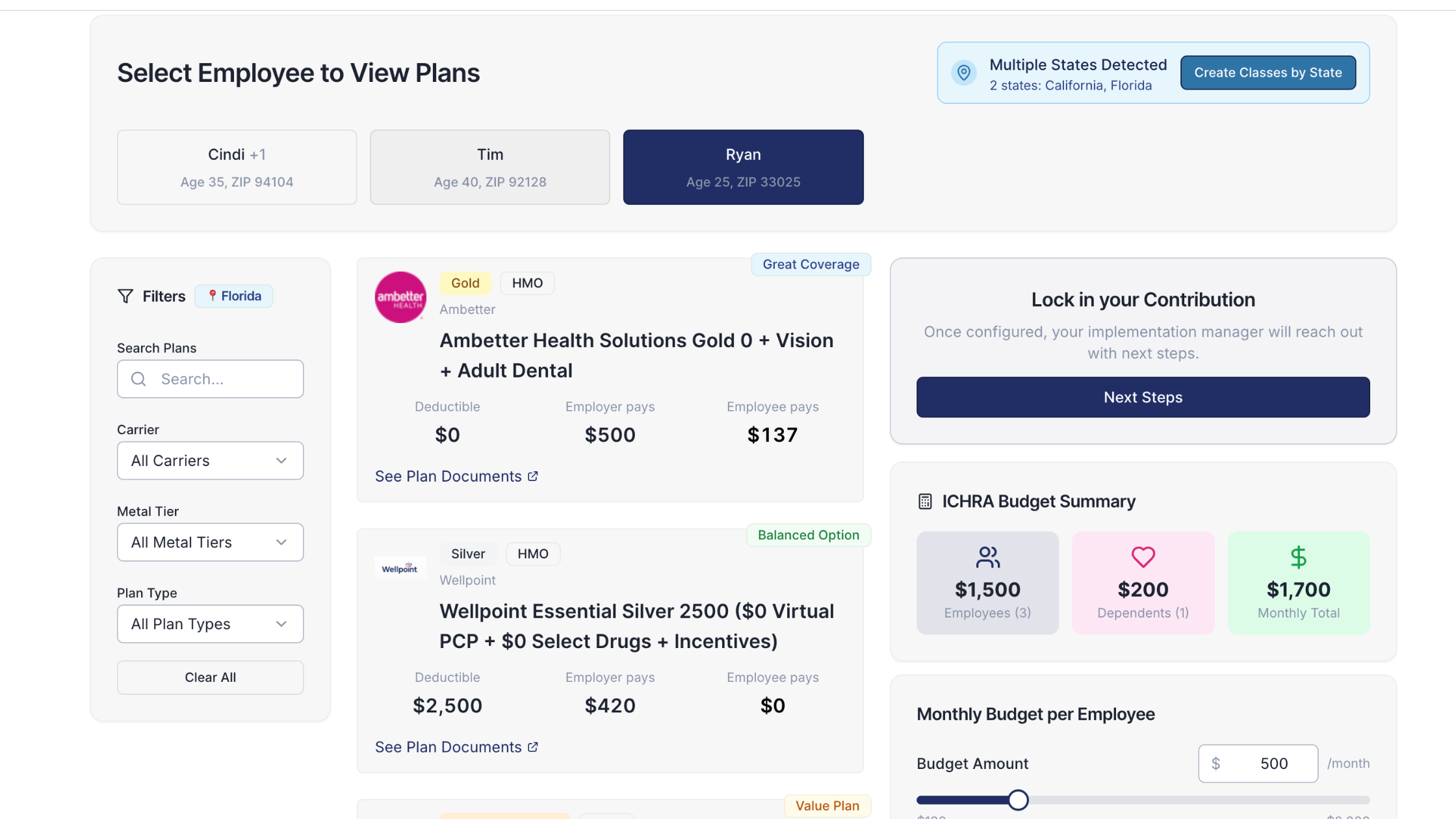How Can Payroll Sync With Health Benefit Reimbursements Automatically?

Managing employee benefits can feel like a juggling act. On one hand, you have health benefit claims and reimbursements. On the other, you have payroll processing. Traditionally, these two functions have operated in separate silos, creating a mountain of administrative work, a high risk of errors, and a frustrating experience for employers and employees alike. But what if they could talk to each other? This guide explains how to make automated health benefit reimbursements a seamless part of your workflow.
The modern workforce demands flexibility and efficiency, and that extends to benefits administration. By syncing your health benefits platform with your payroll system, you can eliminate manual data entry, ensure accuracy, and free up your HR team to focus on more strategic initiatives.
The Old Way vs. The New Way: Why Integration Matters
For years, managing health benefit reimbursements was a manual, multi-step process. An employee would pay for a medical expense, submit a receipt with a claim form, and wait for the HR or finance team to review it. If approved, a team member would then have to manually enter that reimbursement amount into the next payroll run.
This process is not only slow but also dangerously prone to human error. A single misplaced decimal, a forgotten entry, or a misfiled form could lead to an incorrect paycheck, a frustrated employee, and a potential compliance headache. Every manual touchpoint introduces a new opportunity for mistakes that can erode employee trust and create costly administrative churn.
Now, imagine a different scenario. An employee submits their qualified medical expense through a simple, user-friendly mobile app. The expense is automatically verified and approved based on pre-set plan rules. From there, the information flows directly into your payroll system, and the correct, tax-free reimbursement amount is added to their next paycheck without anyone on your team lifting a finger.
This isn't a futuristic dream; it's the reality of payroll health insurance integration. This automated connection between systems is the key to creating a streamlined, efficient, and error-free benefits program that meets the expectations of a modern workforce.
How Does the Sync Actually Happen?
The magic behind this connection lies in Application Programming Interfaces (APIs). An API acts as a secure bridge that allows your health benefits platform and your payroll software to communicate and share data in real-time. This creates a single, unified system for managing benefits and compensation.
Here’s a simplified breakdown of the process:
- Secure Connection: The two systems are connected through a secure API integration. This allows the benefits platform to access necessary employee data from the payroll system (like name, salary, and employment status) and, crucially, to write reimbursement and deduction data back to it.
- Claim Submission and Approval: An employee incurs a medical expense and submits a claim through their benefits portal, often by just snapping a photo of the receipt. Using smart technology, the platform verifies that the expense is eligible for reimbursement under the plan rules, automating a key part of the process.
- Automatic Payroll Update: Once a claim is approved, the benefits platform sends an instant signal to the payroll system. It communicates the exact reimbursement amount to be added to the employee’s next paycheck, ensuring perfect accuracy.
- Seamless Payment: The payroll system processes this information as part of its normal cycle. The employee receives their reimbursement directly with their regular pay, clearly marked and completely tax-free.
This level of health reimbursement automation transforms a once-cumbersome task into a smooth, background operation that works flawlessly every time.
The Power of Health Benefit Administration Software
To make this seamless sync a reality, you need the right tools. Modern health benefit administration software is designed to be the central hub for managing your company's benefits. These platforms do more than just track expenses; they automate nearly every aspect of benefits management, creating a better experience for both administrators and employees.
A robust software solution will handle:
- Employee Onboarding: New hires can be automatically enrolled in their chosen health plans without manual intervention. The system pulls their data from your HRIS or payroll and presents them with their benefit options.
- Contribution Management: The software calculates and adjusts deductions for health plans and other benefits automatically, ensuring accuracy with every payroll run.
- Compliance: It helps you stay compliant with federal and state regulations by keeping meticulous records, ensuring plan documents are in order, and generating necessary reports.
- Employee Self-Service: Employees can manage their benefits, check reimbursement balances, and submit claims through an intuitive portal. This empowers them with information and reduces the administrative burden on your HR staff.
When this software features strong payroll integration capabilities, its value multiplies. It becomes the single source of truth for all benefits-related financial data, ensuring consistency and accuracy across the board and making payroll deduction automation a simple reality.
Best Practices for a Smooth Integration
Connecting your systems is a significant step, and following best practices will ensure the process is successful and secure. A well-planned integration will save you headaches down the road and maximize the return on your investment.
Prioritize Data Security and Compliance
You are dealing with sensitive employee information, including financial and health data. Security cannot be an afterthought. Your chosen health benefit administration software must adhere to top data security standards, including data encryption and role-based access controls. This ensures that only authorized individuals can access sensitive information, protecting your company and your employees.
Conduct a Thorough Data Audit
Before you sync your systems, it's essential to perform a comprehensive audit of your existing data. Inaccurate or outdated information in your payroll or HR system will only create problems when integrated. Clean up your records, resolve any discrepancies, and ensure all employee information is current. This proactive step prevents the synchronization of bad data, which could otherwise lead to payroll errors and compliance issues.
Plan for Change Management
Even the best technology is only effective if people use it correctly. Train your employees and HR team on how the new, integrated system works. Clear communication is key. Explain the benefits of the new process, walk them through how to submit claims or check balances, and show them how health reimbursement automation makes their lives easier. A good partner will provide resources and support to help with this transition.
Choose a Partner, Not Just a Provider
Look for a benefits provider that offers proven, pre-built connections with your existing payroll system. A true partner will have a team of experts to guide you through every step of the process, from implementation and compliance to ongoing support. They should understand the nuances of benefits administration and be committed to ensuring your success.
Beyond Reimbursements: Automated HSA Contributions
The benefits of integration extend beyond just reimbursements for plans like an Individual Coverage Health Reimbursement Arrangement (ICHRA). This technology is also perfect for managing contributions to other tax-advantaged accounts, such as a Health Savings Account (HSA).
HSAs are a powerful tool for employees, allowing them to save for medical expenses tax-free. However, managing contributions can be another administrative chore. With automated HSA contributions, this process becomes effortless.
An integrated system allows employees to set their desired pre-tax contribution amount through their benefits portal. The payroll deduction automation feature then ensures that this amount is correctly deducted from each paycheck and deposited into their HSA without any ongoing manual adjustments from your team. The system can also automatically enforce annual contribution limits set by the IRS, preventing costly errors for both the employee and the employer.
The Tangible Benefits of Payroll Health Insurance Integration
Connecting your payroll and health benefits systems isn't just about convenience; it delivers significant, measurable advantages for your business and your employees.
For Employers:
- Reduced Administrative Work: By automating data entry and calculations, you can save your team several hours of manual work each month. This frees them from tedious tasks and allows them to focus on more strategic initiatives that add value to the business.
- Fewer Errors and Better Compliance: Automation minimizes the risk of human error, leading to more accurate payroll and fewer compliance issues. This is especially important for managing pre-tax deductions and tax-free reimbursements, where mistakes can lead to penalties and erode employee trust.
- Improved Efficiency: A streamlined process means benefits administration runs smoothly in the background. Your HR team can onboard new employees, manage life events, and process reimbursements without getting bogged down in paperwork, making the entire department more efficient.
- Cost Savings: Increased efficiency and fewer errors translate directly to lower operational costs. You spend less time and fewer resources on correcting mistakes and managing a cumbersome manual process.
For Employees:
- Faster Reimbursements: Employees get their money back faster when the process is automated, improving their satisfaction and financial wellness. They no longer have to wait weeks for a separate check to arrive.
- Greater Transparency: A unified platform allows employees to see their contributions, reimbursements, and account balances in one place, giving them a clearer picture of their total compensation and benefits.
- A Better Experience: A simple, modern benefits experience shows employees that you value their time and well-being. In a competitive job market, a seamless benefits process can be a powerful tool for attracting and retaining top talent.
Venteur: Your Companion in Health Benefits
Choosing the right partner is critical to achieving a truly seamless benefits experience. While many vendors offer some form of health reimbursement automation, Venteur is designed from the ground up to perfect the process, specifically for the most flexible and employee-friendly benefit available today: the Individual Coverage Health Reimbursement Arrangement (ICHRA).
At Venteur, we empower companies to offer personalized, cost-effective health benefits that employees actually want. Our user-friendly platform simplifies every aspect of ICHRA administration, from plan design and employee onboarding to claim processing and payment. Our key differentiator is our deep payroll health insurance integration. We believe that getting reimbursed for healthcare should be as easy as getting paid.
With Venteur, the entire reimbursement cycle is automated. Employees use our simple interface to submit claims, and once approved, the reimbursement data flows directly to your payroll provider. It’s a hands-off process for you and a hassle-free experience for your employees. By focusing on deep integration, we help you unlock the full potential of ICHRA, saving your company up to 30% in costs and providing your employees with high-quality, flexible health insurance they can take with them wherever their career goes.
You got questions, we got answers!
We're here to help you make informed decisions on health insurance for you and your family. Check out our FAQs or contact us if you have any additional questions.
An HRA (Health Reimbursement Arrangement) and an HSA (Health Savings Account) are both tax-advantaged accounts used for medical expenses, but they have key differences:
- Ownership: An HRA is owned by the employer, while an HSA is owned by the employee. If the employee leaves the company, the HRA funds stay with the employer, but the employee takes their HSA with them.
- Funding: Only the employer can contribute to an HRA. With an HSA, both the employee and the employer can contribute.
An ICHRA (Individual Coverage Health Reimbursement Arrangement) integrates with payroll to provide tax-free reimbursements to employees. Once an employee's claim for a qualified medical expense is approved, the ICHRA administration platform automatically notifies the payroll system to add the reimbursement amount to the employee's next paycheck.
To offer tax-free health reimbursements, employers must follow specific IRS rules. The reimbursement plan must be formally documented, offered fairly to all eligible employees, and can only be used for qualified medical expenses as defined by the IRS.
Yes, absolutely. Modern health benefit administration software is designed for businesses of all sizes. Cloud-based platforms and solutions with no setup fees or monthly minimums, like Venteur, make automated health benefit reimbursements accessible and affordable for everyone.
The setup time can vary depending on the systems involved, but with modern platforms, it’s often very fast. If you're already using a compatible payroll provider, establishing integration with a benefits platform can be completed in a few minutes.
Explore more related content
What is Venteur
Explore the best human-first Health Insurance platform
Simple, personalized health benefits
Sign up in minutes, define your contribution, and let your employees choose the health plan that works right for them
Integrations to make everything run smoothly
We'll connect with your payroll and finance systems to make deductions and premium payments seamless
Easy onboarding and off-boarding
In just a few clicks, add your roster and make updates on the fly. We'll handle it from there.
Venteur Certified Brokers to help your employees pick the right plan
Our trusted brokers ensure the best outcomes for employees and employers by unlocking health savings and providing unrivaled plan options.
AI-powered plan recommendations to give you confidence while you shop
Backed by 30 years of healthcare data, Venteur’s AI helps employees compare and choose the best plan for their unique situation.
Compliance and reporting because no-duh!
Venteur manages plan administration, reporting, and compliance so you can focus on growing your business.


